The Pituitary Gland
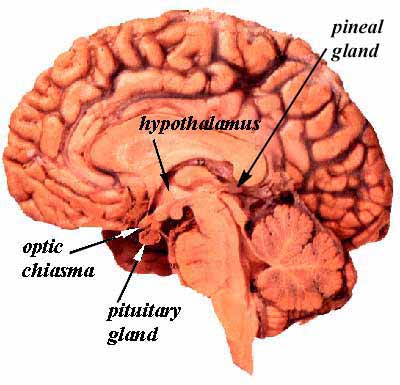
The pituitary
gland is a roundish organ, about the size of a pea, located just
behind the bridge of the nose in the center and at the base of
the skull/brain in a depression called the sella turcjca ("Turkish
saddle"). It weighs about 1/2 gram (0.018 oz) produces 0.00001
grams of hormone per day, and is attached to the hypothalamus
via nerve fibers. It
is an important link between the nervous system and the endocrine
system.
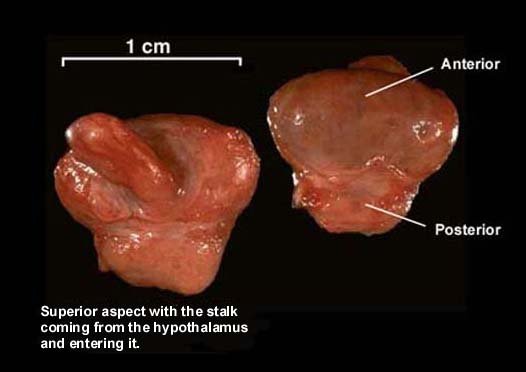
The pituitary
gland consist of three lobes:
(1) anterior (secretes protein hormones)
(2) intermediate
(3) posterior (is an extension of the hypothalumous)
Each lobe
produces and releases hormones that affect growth, sexual development,
metabolism and the reproduction system, particularly the ovaries
and testes as well as the adrenal, kidneys, breasts, intestines,
bladder, uterus, stomach and spleen.
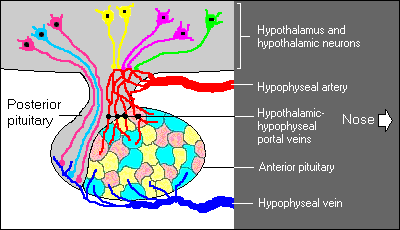
The posterior is composed of axons of hypothalamic neurons that
extend downward as a large bundle behind the anterior. It also
forms the pituitary stalk, which appears to suspend the anterior
from the hypothalamous.
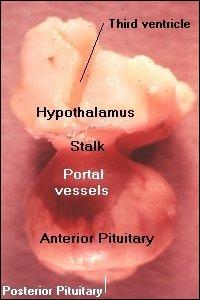
The above image on the is the frontal view of the pituitary gland
and hypothalamus of a sheep. This image will hopefully give you some idea
how the parts of this organ fit together.
Hormone
secretion from the anterior pituitary is strictly controlled
by hypothalamus hormones. The "hypothalamus" is a cluster of
brain cells just above the pituitary gland, which transmits messages
from the body to the brain.
For years, the pituitary gland was believed to be the master
gland of the body, but now we know that the "hypothalamus"
is the true "master gland" of the body. The hypothalamus is
the link between the pituitary gland and the brain. It is akin to a way
station between the body and the brain. It sorts out the messages to and from
the body and responds accordingly through the pituitary gland.
The hypothalamus
replies to the needs of the body by nerve impulses to the pituitary
gland, which in turn produces the hormones the body's needs.
These hormones are then circulated in the blood to the body's
tissues, including other endocrines.
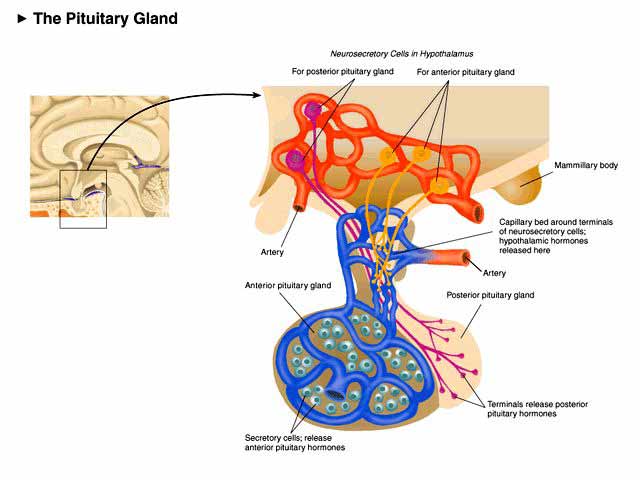
Now you know the basic purpose of the
pituitary gland.
But what does the pituitary gland have to do with the
6th chakra? and the Third Eye?
<<Back
Please